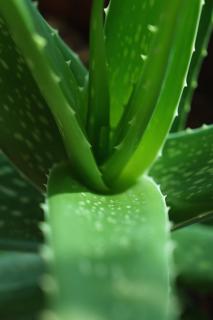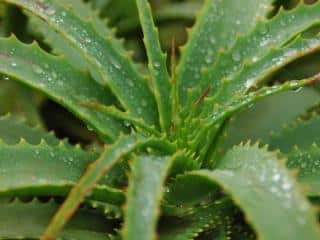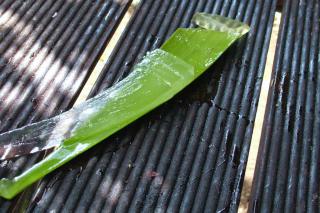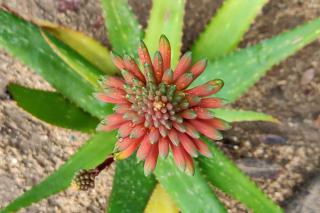

Aloe vera is a very ornamental indoor succulent, easy to care for.
Aloe vera facts to know
Name – Aloe vera
Family – Liliaceae (lily family)
Type – indoor plant
Height – 1 ⅓ to 3 feet (0.5 to 1 meter)
Exposure – well-lit
Soil – soil mix + sand
Flowering – March
Not a demanding plant at any time during the year. leaves are original and elegant. It is also used for its medicinal properties, especially in the field of cosmetics.
This very resilient plant, that copes extremely well to heat, will thrive both outdoors in summer and indoors over the winter.
 Aloe vera requires a good deal of light but doesn’t appreciate direct sunlight which tends to dehydrate the plant.
Aloe vera requires a good deal of light but doesn’t appreciate direct sunlight which tends to dehydrate the plant.
Too much sunlight could quickly dry the leaves and turn them permanently yellow.
Try to place it near a window that gets plenty of light, but avoid having the sun’s rays hit it directly.
The temperature of a house or apartment is perfect, because ideal temperatures range from 65 to 70° F (18 to 21° C) all year round.
From May to September, you can bring your plant outdoors without any problems, but do bring it back inside in the evening if nights are cold.
 Watering must be moderate but regular, more or less once a week. Best is to water when the surface of the soil has dried out.
Watering must be moderate but regular, more or less once a week. Best is to water when the surface of the soil has dried out.
Don’t wait too long, especially if it is hot, because the plant could suffer from it.
If tap water in your area is hard, try to find any available spring water, or collect rainwater.
Lukewarm water is better than cold water. The temperature gap could dramatically stress your aloe vera.
Slowly restrict watering during the dormant state.
Wait for the soil to dry off to about an inch deep (a few centimeters) before watering again with lukewarm water.
You’ll water again at a normal rhythm in spring, when the plant starts growing again.
This step is mandatory and must be repeated every 2 or 3 years to a pot slightly larger than the previous one.
Once every 3 years at most, repot your Aloe vera in spring after the blooming.
Upon repotting, choose a pot that is slightly wider across than the previous pot, but not too large. Check that the bottom of the pot lets water drain through holes.
No need to add fertilizer to your Aloe vera.
 Aloe vera gel presents undeniable therapeutic virtues.
Aloe vera gel presents undeniable therapeutic virtues.
To collect this gel, simply cut a leaf off at the base and chop it into pieces about an inch (a couple centimeters) wide.
Slice these pieces lengthwise, and scrape the gel off. Aloe vera gel can be put to use in a great many ways.
If you’re good with the blade, you can also try peeling the skin off in one go!
Aloe vera gel contains nutrients that increase survival of cuttings. It acts as a natural rooting hormone.
It’s tricky to get your aloe vera to flower when you aren’t in tropical climates. It may take years for the plant to feel comfortable enough to send up a floral scape, but when it does, it’ll be well worth the wait!
When your aloe flowers, you’ll realize how close it is to its cousin, the poker plant.
 Plants need approximately 4-5 years to mature from the moment they were separated from the mother plant as pups.
Plants need approximately 4-5 years to mature from the moment they were separated from the mother plant as pups.Following these steps will ensure your Aloe vera plant will have the best chances of flowering!
Read also:
I love growing aloe plants, and now I have about 15 in my home. Too many? Possibly, but they’re such beautiful plants and so easy to maintan!